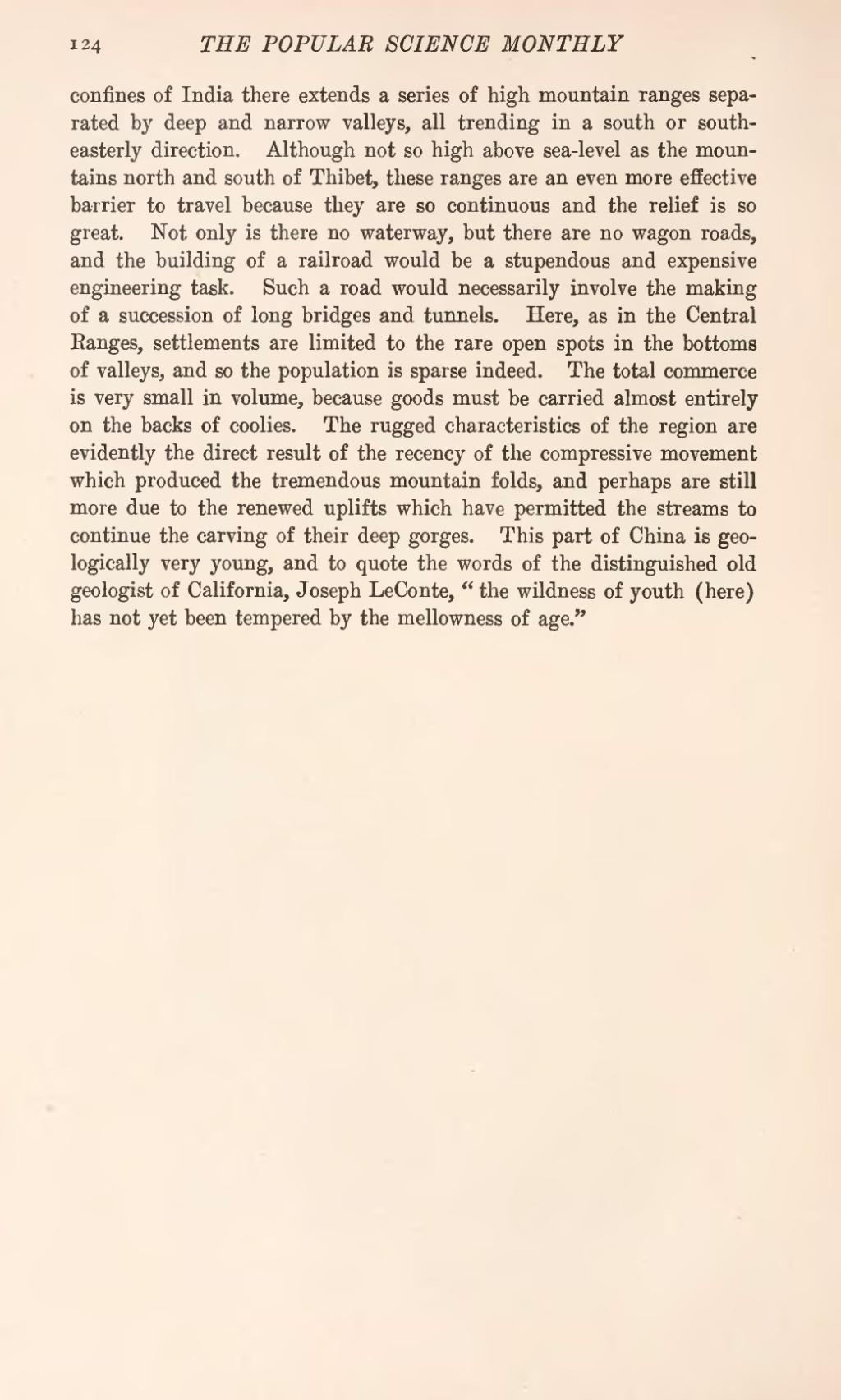confines of India there extends a series of high mountain ranges separated by deep and narrow valleys, all trending in a south or southeasterly direction. Although not so high above sea-level as the mountains north and south of Thibet, these ranges are an even more effective barrier to travel because they are so continuous and the relief is so great. Not only is there no waterway, but there are no wagon roads, and the building of a railroad would be a stupendous and expensive engineering task. Such a road would necessarily involve the making of a succession of long bridges and tunnels. Here, as in the Central Ranges, settlements are limited to the rare open spots in the bottoms of valleys, and so the population is sparse indeed. The total commerce is very small in volume, because goods must be carried almost entirely on the backs of coolies. The rugged characteristics of the region are evidently the direct result of the recency of the compressive movement which produced the tremendous mountain folds, and perhaps are still more due to the renewed uplifts which have permitted the streams to continue the carving of their deep gorges. This part of China is geologically very young, and to quote the words of the distinguished old geologist of California, Joseph LeConte, "the wildness of youth (here) has not yet been tempered by the mellowness of age."
Page:Popular Science Monthly Volume 82.djvu/128
124
THE POPULAR SCIENCE MONTHLY
